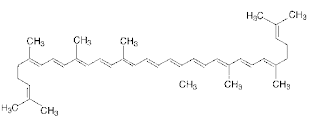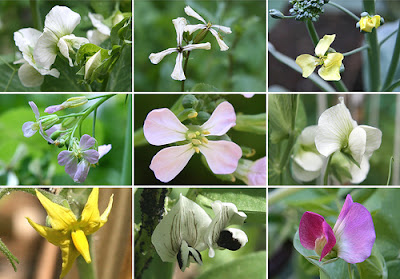 To date i have been looking at the process of brachytherapy and have been trying to find ways to use the processes to spark off ideas to generate work .. Seeds were my first thought as seeds are used in brachytherapy and also within the planting of a garden ( the theme of the commissioned works within the hospital ).. in the process of generating ideas i have looked at seed planting and the growth of seeds.. i have also looked at plants and flowers associated with health and emotional states . in order to make a work that demonstrates the research to date i am now looking at ways i can formulate this into a large scale piece of work .
To date i have been looking at the process of brachytherapy and have been trying to find ways to use the processes to spark off ideas to generate work .. Seeds were my first thought as seeds are used in brachytherapy and also within the planting of a garden ( the theme of the commissioned works within the hospital ).. in the process of generating ideas i have looked at seed planting and the growth of seeds.. i have also looked at plants and flowers associated with health and emotional states . in order to make a work that demonstrates the research to date i am now looking at ways i can formulate this into a large scale piece of work . 2.11.07
 To date i have been looking at the process of brachytherapy and have been trying to find ways to use the processes to spark off ideas to generate work .. Seeds were my first thought as seeds are used in brachytherapy and also within the planting of a garden ( the theme of the commissioned works within the hospital ).. in the process of generating ideas i have looked at seed planting and the growth of seeds.. i have also looked at plants and flowers associated with health and emotional states . in order to make a work that demonstrates the research to date i am now looking at ways i can formulate this into a large scale piece of work .
To date i have been looking at the process of brachytherapy and have been trying to find ways to use the processes to spark off ideas to generate work .. Seeds were my first thought as seeds are used in brachytherapy and also within the planting of a garden ( the theme of the commissioned works within the hospital ).. in the process of generating ideas i have looked at seed planting and the growth of seeds.. i have also looked at plants and flowers associated with health and emotional states . in order to make a work that demonstrates the research to date i am now looking at ways i can formulate this into a large scale piece of work . 30.10.07
 about garden design .. i have been thinking that a garden could be designed using the researched gained to date and also incorporating the flowers and plants associated with diet and health
about garden design .. i have been thinking that a garden could be designed using the researched gained to date and also incorporating the flowers and plants associated with diet and health
http://www.chelseaphysicgarden.co.uk/garden/index.html http://www.chelseaphysicgarden.co.uk/garden/gowm.html Oncology bed . chelsea physic garden Camptotheca acuminata, Catharanthus roseus , Papaver somniferum, Podophyllum hexandrum, Podophyllum peltatum, Taxus baccata, Taxus brevifolia
15.10.07


11.10.07
1.10.07
30.9.07
almond blossom -hope.
snowdrop -hope.
yarrow – healing
alium – strength.
eremurus - endurance.
eucalyptus – protection.
honeysuckle: bonds of love.
oakleaves: bravery.
pansies: receipient is being thought about. The flower's name comes from the French word pensée which means thought or remembrance. .
rosemary: remembrance.
violet, blue: watchfulness, faithfulness, I'll always be true.
yarrow: healing.
zinnia: thoughts of absent friends, in memory of an absent friend.
borage – courage.
bay Leaf – strength.
artemesia - symbol of dignity.
marigold - comforts the heart.
pear blossom: health and hope.
rose(tea) - I’ll always remember.
snowdrop- hope and consolation.
viscaria - will you dance with me? .
zinnia (yellow) - daily remembrance.
29.9.07
I have been looking at the definition of garden to generate ideas gar·denn. 1.A plot of land used for the cultivation of flowers, vegetables, herbs, or fruit. 2. gardens Grounds laid out with flowers, trees, and ornamental shrubs and used for recreation or display. Often used in the plural: public gardens; a botanical garden. 3. A yard or lawn. 4. A fertile, well-cultivated region. 5. a. An open-air establishment where refreshments are served.b. A large public auditorium or arena. v. gar·dened, gar·den·ing, gar·dens v.tr. 1. To cultivate (a plot of ground) as a garden. 2. To furnish with a garden. 1. To plant or tend a garden. 2. To work as a gardener. adj. 1. Of, suitable to, or used in a garden: garden tools; garden vegetables. 2. Provided with open areas and greenery: a garden community. 3. Garden-variety.Idiom: lead/take down the garden path To mislead or deceive (another).
28.9.07
- creating embroidered textiles which would then be xrayed
- embroidering layers of text/ stitch/ fabric qualities
- digitally manipulating results to created digitally printed imagery.
Revealing the hidden: the X-radiography of textiles
Mary M Brooks, Senior Lecturer, Textile Conservation Centre, University of Southampton . Sonia A O'Connor, Research Fellow in Archaeological Conservation, Department of Archaeological Sciences, University of Bradford
X-radiography of textiles
X-radiography is an established non-destructive investigative technique used  in many areas of conservation practice which has not usually been applied to textiles. The aim of this interdisciplinary research is to explore the potential of x-radiography as a tool for the characterisation, condition assessment, study and conservation decision-making of ancient, historic and contemporary textiles. Such X-radiographs enable hidden aspects of textiles and textile artefacts, such as seaming, stuffings and structural supports, to become evident as well as more subtle details such as internal stitching threads, variations in weave structures and differential metal weightings on silk fabrics. It can also be used for mapping areas of repair and deterioration. The benefits of such analysis are not only for conservators and curators since X-radiographs are also an exciting and dramatic tool for communicating a greater understanding of textiles to the public.
http://www.bl.uk/services/npo/journal/2/textile.html
in many areas of conservation practice which has not usually been applied to textiles. The aim of this interdisciplinary research is to explore the potential of x-radiography as a tool for the characterisation, condition assessment, study and conservation decision-making of ancient, historic and contemporary textiles. Such X-radiographs enable hidden aspects of textiles and textile artefacts, such as seaming, stuffings and structural supports, to become evident as well as more subtle details such as internal stitching threads, variations in weave structures and differential metal weightings on silk fabrics. It can also be used for mapping areas of repair and deterioration. The benefits of such analysis are not only for conservators and curators since X-radiographs are also an exciting and dramatic tool for communicating a greater understanding of textiles to the public.
http://www.bl.uk/services/npo/journal/2/textile.html
25.9.07
24.9.07
21.9.07
 brachytherapy :
Radiation treatment given by placing radioactive material directly in or near the target, which is often a tumor. Brachytherapy for prostate cancer, for example, is also called interstitial radiation therapy or seed implantation. In brachytherapy for prostate cancer, radioactive seeds are implanted in the prostate. The seeds might be titanium-encased pellets containing the radioisotope iodine-125.
"Brachy-" is Greek for "short." The opposite of brachytherapy is teletherapy, treatment in which the radiation source is at a distance from the target.
brachytherapy :
Radiation treatment given by placing radioactive material directly in or near the target, which is often a tumor. Brachytherapy for prostate cancer, for example, is also called interstitial radiation therapy or seed implantation. In brachytherapy for prostate cancer, radioactive seeds are implanted in the prostate. The seeds might be titanium-encased pellets containing the radioisotope iodine-125.
"Brachy-" is Greek for "short." The opposite of brachytherapy is teletherapy, treatment in which the radiation source is at a distance from the target.
- brachytherapy seeds
- plant/ flower seeds
Blog Archive
-
▼
2007
(29)
-
►
October
(9)
- i have been looking a the history of medicinal g...
- seed stitch
- phytoestrogens lycopene line i am intere...
- lycopene possible reduced risk of prostrate ca...
- garden companion planting vegetables and f...
- vegetable flowers
- thinking of seeds planted i have been lookin...
- planting seeds inserting seeds creating seed beds
- seedsborage seeds and seed pod
-
►
September
(18)
- viscaria:will you dance with me?
- borage:courage
- yarrow: healing
- allium :strength
- oakleaves: bravery
- almond blossom -hope. snowdrop -hope.yarrow – heal...
- I have been looking at the definition of garden to...
- i have discovered a project working with radiogr...
- I have been looking at Kew Gardens millenium seed ...
- thinking about the garden theme of the arts com...
- Brachytherapy (radioactive seed implants) is so...
- xray seeds needles
- xray with purple highlights xray wi...
- i have been looking at brachytherapy seeds try...
- brachytherapy : Radiation treatm...
- my textile commission will be placed w...
- 'we want views of the outside, trees. flower...
-
►
October
(9)
































